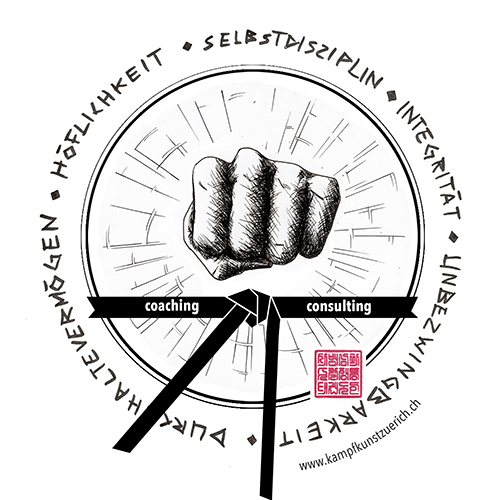Open up to your world of possibilities Do you find yourself constantly worrying about what…

Leadership: realizing the signs of time
Leaders have been increasingly witnessing talents leaving their companies.
Burnt out, overworked and in many cases underappreciated, they decide to look for organisations that care. Many employees were forced during the pandemic to work from home or operate differently, experiencing work in a different way. These enforced changes accelerated trends and that were already happening with digitalization and agile teams.
To cope with the new work trends and get fit for them, it’s important that leaders recognize and acknowledge the signs of the times. Change has long since happened and will continue.
The signs of time
➡️ Quiet quitting
Quiet Quitting means that people are ready to quit at an eye blink, if they have to, for example because the employer imposes unwanted duties such as being present in the office or introduces control mechanisms which demonstrate lack of trust.
No commitment to the company, little ambition to go the famous extra mile, lack of engagement. Is that really so? Where does this approach come from?
A lot of people just don’t see the point of working until they drop before getting a leadership position. High-potentials, young talents and committed specialists no longer see that they should first prove themselves for years before getting a promotion. Work has long ceased to be the most important thing in life: work is just one dimension besides private life and free time. If work demands too much of a toll, you just leave it or change it. Period.
Quality of life is what counts.
Both younger and older generations seek for meaningful work and emphasize how their professional world must leave room and time for personal happiness, i.e. friends, family, interests.
➡️ Success is not equal to status/function/money
Success is no longer based on standards dictated by society- success rather depends on what each individual strives for and considers as a fulfilling and meaningful life.
Work as we know it, continues to change. No one is willing to sacrifice their lifetime for a career. Fulfillment and purpose come first.
➡️ Commitment has nothing to do with working hours
I belong to Generation X and I know how in the 90s the desire for part-time or flexible working hours, let alone home office would have been a career brake. Persevering in the job and working your way up through loyalty was welcome. The last person to leave the office and the first person to sit at their desk in the morning were considered engaged.
Completely different today. Luckily.
Performance and results do not depend on location or time.
➡️ Ambiguity is ever more present
Many people find it difficult to deal with the increasing complexity and uncertainty resulting from digitalization and technology; The information overload and being constantly “on” is overwhelming and goes by many at the cost of well-being and mental health. By others is constant change and ambiguity source of concerns and fear, therefore met with skepticism or rejection. Dealing constructively with ambiguity requires accepting it, coping with the fact that what works today, might be already obsolete tomorrow, looking at situations in a more differentiated and open manner. Accepting diversity. And yet finding a direction, making decisions, creating clarity in this ocean of options.
This is the only way leaders and teams can remain flexible and able to act even in the face of uncertainty.
➡️ The challenges in the labor market are shifting to employers’ side
Many companies have been adapting to this change for years by working on strategies on how to increase their attractiveness as an employer of choice and on how to develop and thus bind their workforce ( also read Employee satisfaction: what really counts.)
Employees increasingly have the choice of where and how they want to work: they actively determine and choose their own development opportunities, often detached from traditional career paths. In return, companies must become more and more flexible and develop from a vertical hierarchical, top-down, to horizontal structures and open communication.
Values such as transparency, fairness and integrity are paramount: no more power and information held in closed circles by just a few. (Also read Values as a success factor in leadership).
There is no general solution to these challenges: Management styles and the change in culture and working models differ depending on the industry, company size or demographics. However, there are common denominators.
A good starting point is to create a basis of trust and to remain true to yourself and your values as a person and leader.
💪 Trust
A leadership style characterized by trust requires transparency in communication and the ability to let go and delegate. As a leader, you don’t need to know or control everything down to the smallest detail. It is better to encourage your employees to think for themselves and to act independently.
When your people are empowered to create their own solutions, generate new ideas and feel accountable, they automatically bring the best of their talents to work, even when working from home.
👏 Humanity
When organizations consider people and relationships at the same if not higher priority than profit, both businesses and people thrive.
Successful leaders are human: they show compassion, humility and trust in their employees; at the same time, they are able to define clear frameworks and give the direction their team expects from them. (Also read Leadership: What defines a good manager?)
Conclusion
Leaders are called upon to think about their own role: as coach, as role model or as primus inter pares, decision-maker and mentor. (Also read Leadership: What defines a good manager?)
Successful leaders do not build trust because of their position and function or because they know all the answers, but because they think ahead, have visions, show passion and interest in others; they constantly convey a strong non-verbal message: “You are important to me and the company. Your work and your opinion count. Only together we are strong. Only together we can achieve our goals»
For many leaders and organizations, however, this change of role, especially if they are used to hierarchical thinking, is unsettling and hard to portray consistently from top to bottom. Change however can only happen, if the leadership of an organization can embrace it at all levels.
Leaders shape team behavior: and team behavior eventually impact results.
Knowing that a secure job is no longer so crucial for the workforce, managers are well advised to say goodbye to old rigid rules and models and instead look at individual needs and life goals. Being aware that on the one hand, employees seek fulfilment and appreciation as individual, but at the same time, they thrive within a community where they can commit, where they feel they belong to and are valued.
At eye level.
What now?
Another financially difficult year is coming to an end. And 2023 will continue to be challenging. What took us to here, who we are today, is already changing. We need to move with the tide and look ahead, both for development potential and opportunities.
This is the time to think about it, to take a closer look, preferably from a distance, from different perspectives.
👉 What will my organization / team look like in the future? What do I stand for?
👉 What are my mission/values and goals and how can they be aligned with a overall corporate vision?
👉 Is my team behind me? Who belongs to it, who does not anymore and should go?
👉 What defines my leadership style?
👉 What can I change and to what extent am I willing to work on myself?
👉 What is my impact as a leader? How am I perceived? How would I like to be perceived?
You are welcome to do that with us – differently. With curiosity and with martial arts as a leitmotif in the background. Our leadership trainings are open for registration. Or schedule a private coaching to discuss your individual need.



